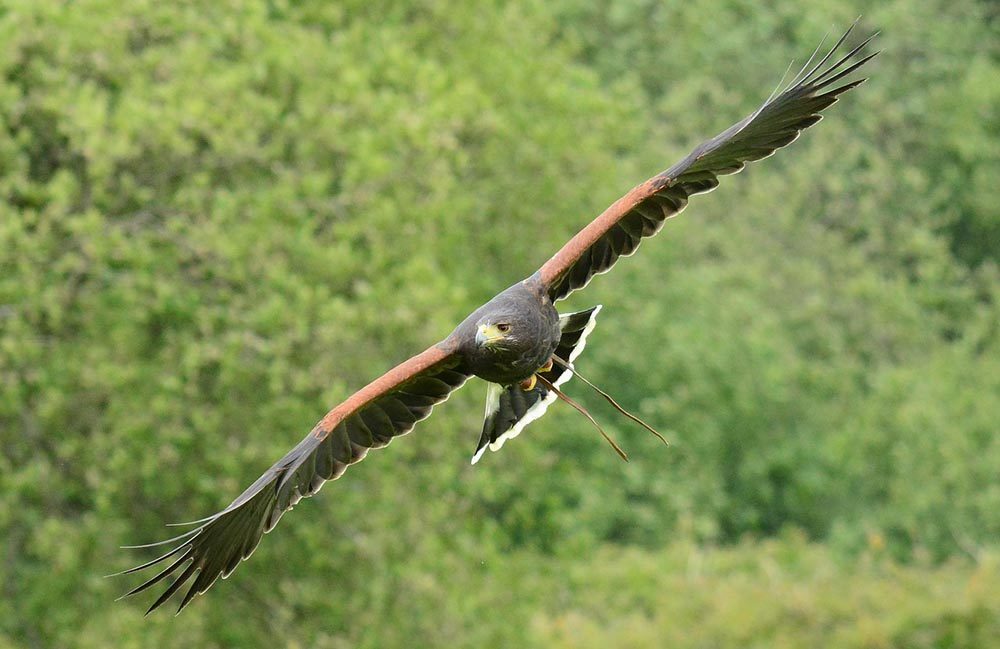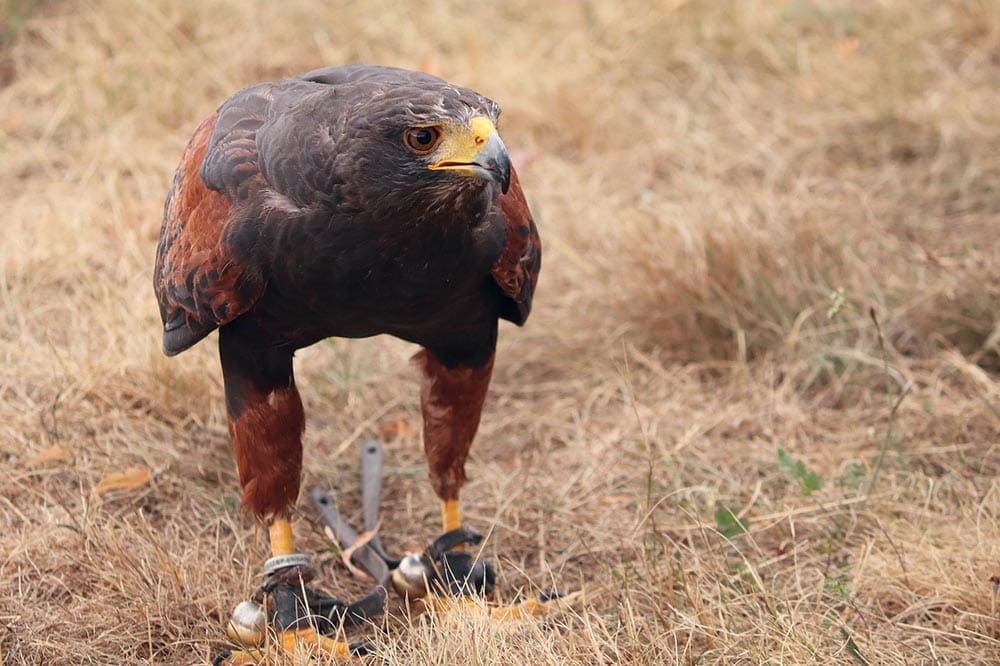Do Hawks Eat Squirrels?
Last Updated on

Many people like squirrels and even encourage them to live in their backyards by feeding them. If there’s anything you can say about these rodents, it’s that they are survivors. The list of their predators tells the story, from coyotes to snakes to even domestic cats. Squirrels show up on the menu a lot. Unluckily for them, that lineup also includes hawks.
However, there’s more to the story than meets the eye. A lot depends on the body structure, habitat, and behavior of the hawk. To call these raptors opportunistic only scratches the surface. Nonetheless, the squirrels have a few things up their sleeves, which that makes them less of an easy mark.

Living Like a Hawk
One look at a hawk, and you know it means business. Its formidable beak and talons are its primary weapons in the hunt. Its body shape, behavior, and prey species distinguish these birds from falcons, which are not a part of this group. They are more likely to take advantage of their fast speeds and take birds on the wing. If you have a bird feeder, you’re probably well-acquainted with these raptors.
Hawks are diurnal or daytime animals. The same thing applies to ground and tree squirrels. It’s safe to say that their paths will likely cross. On the other hand, flying squirrels are nocturnal. They’re more likely to encounter a night-hunting owl than a hawk.
Hawks have a distinctive way of eating their prey based on what it is. For example, a Broad-Winged Hawk will pluck the feathers from birds or skin a snake before feeding on it. Mammals such as squirrels are eaten whole or in pieces. If you thought their size would act as a deterrent to predation, think again. Larger raptors such as the Red-Tailed Hawk have no problem taking a 3-pound Eastern Cottontail.
The Grey Squirrel weighs in at 1.5 pounds.

Hunting Methods
Hawks have forward-facing eyes like many predators. That allows them to home in on their prey with uncanny precision. A hawk soaring overhead on the thermals or one perched in a tree will see a squirrel foraging for food in the grass. If you think it could outrun the raptor, we’re sorry to say that doesn’t always work out for the squirrel, anyway.
These rodents can run up to 20 mph. A Red-Tailed Hawk can swoop down, going up to 120 mph at full speed.
Being Able to Escape
All this information is not to say that squirrels don’t have at least a fighting chance. Their eyes are located farther back on their heads, which gives them a broader range of view. After all, anything that is likely to attack them stands above them, so it only makes sense that evolution would favor this trait. Camouflage also plays a role in defense, especially if a squirrel stands still.
It’s not a foolproof way to stay safe because of the excellent eyesight of hawks. However, it may help a squirrel see another day.

Paying Attention to the Clues
The other ace in the hole that squirrels have is one that they share with other animals on their end of the food chain. Songbirds face similar challenges from predators every day. One classic way they evade getting eaten is by sounding the alarm. These calls are often short and loud. It may seem counterintuitive to draw attention to oneself, but it’s an effective strategy, nevertheless.
These birds often live in flocks or at least close association with others. It can create confusion in a raptor faced with so many choices. The other driving factor is maneuverability. Sure, a hawk is fast, but it can’t make the darts and quick turns on a dime like a chickadee can. It’s like the difference between driving a Mac truck and a sports car.
Interestingly, squirrels have paid attention to these alarm calls, too. Researchers have found that these rodents heed the message. These animals also have learned to detect the all-clear sign when the alerts switch back to everyday chatter. It’s probably not a stretch to say that many prey species respond in kind when an animal blows the cover of a predator in their midst.

Conclusion
Mammals, including squirrels, are the primary source of food for many hawks. While there are regional differences, a hungry raptor is unlikely to pass up a fat squirrel that has let down its guard. Fortunately, evolution has helped these prey species to adapt in several ways if they pay attention to what’s going on around them.
Featured Image Credit: Pixabay
About the Author Chris Dinesen Rogers
Chris has been writing since 2009 on a variety of topics. Her motto with all of her writing is “science-based writing nurtured by education and critical thinking.” Chris specializes in science topics and has a special love for health and environmental topics, and animals of all shapes and sizes.
Related Articles:
How to Clean a Refractor Telescope: Step-by-Step Guide
How to Clean a Telescope Eyepiece: Step-by-Step Guide
How to Clean a Rifle Scope: 8 Expert Tips
Monocular vs Telescope: Differences Explained (With Pictures)
What Is a Monocular Used For? 8 Common Functions
How to Clean a Telescope Mirror: 8 Expert Tips
Brightfield vs Phase Contrast Microscopy: The Differences Explained
SkyCamHD Drone Review: Pros, Cons, FAQ, & Verdict
